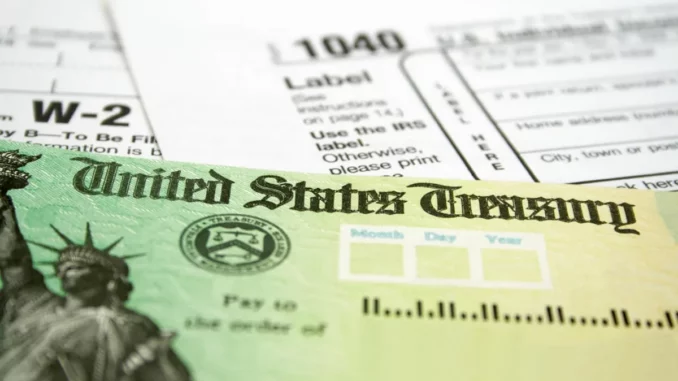
The IRS is introducing new income limits for its seven tax brackets, adjusting the thresholds to account for the impact of inflation. That could provide a break to some taxpayers on their taxes in 2024.
The tax agency on Thursday said it’s adjusting the tax brackets upwards by 5.4%, relying on a formula based on the consumer price index, which tracks the costs of a basket of goods and services typically bought by consumers. The 2024 limits come after the IRS last year expanded its tax brackets by a historically large 7%, reflecting last year’s high inflation.
The IRS adjusts tax brackets annually — as well as many other provisions, such as retirement fund contribution limits — to counter the impact of inflation. That can help avoid so-called “bracket creep,” or when workers are pushed into higher tax brackets due to cost-of-living adjustments or raises even though their standard of living may have remained the same.
Workers can also get a break if more of their taxable income falls into a lower bracket as a result of the higher thresholds. Taxpayers will file their 2024 taxes in early 2025.
Tax brackets
The IRS increased its tax brackets by about 5.4% for each type of tax filer for 2024, such as those filing separately or as married couples.
There are seven federal income tax rates, which were set by the 2017 Tax Cuts and Job Act: 10%, 12%, 22%, 24%, 32%, 35% and 37%.
Taxation in the U.S. is progressive, which means that tax rates get higher the more you earn. However, there’s a common misconception that a worker will pay the highest tax rate they’re subject to on every dollar of their income — that isn’t the case. Instead, each tax rate is applied to your income that falls within each bracket.
But for 2024, more of your income will fall into lower tax brackets. For instance, in the 2023 tax year single tax filers will pay 10% on their first $11,000 of taxable income. In 2024, the first $11,600 of taxable income will fall into the 10% tax bracket, which means $600 of additional income will be taxed at 10%, instead of 12% in the current tax year.
Your so-called marginal rate is the highest tax rate paid on your income, but your effective tax rate — a combination of the rates you pay on various parts of your income — reflects your actual tax rate.
Standard deduction
The standard deduction is also increasing 5.4% in 2024, the IRS said. The new standard deduction for married couples filing jointly will rise to $29,200, an increase of $1,500 from the current tax year.
Single taxpayers and married individuals filing separately will have a standard deduction of $14,600, an increase of $750 from the current tax year.
Heads of households will have a standard deduction of $21,900, an increase of $1,100.
How to determine your tax bracket
You can check your marginal tax bracket by determining your highest taxable income.
For instance, a married couple with $150,000 in gross income would first subtract the 2024 standard deduction from that amount, leaving them with $120,800 in taxable income.
That would put their marginal tax rate at 22%.
However, their effective tax rate is much lower:
- Their first $23,200 of income will be taxed at 10%, or $2,320 in taxes
- Their earnings from $23,200 to $94,300 would be taxed at 12%, or $8,532 in taxes
- Their income from $94,300 to $120,800 would be taxed at 22%, or $5,830 in taxes.
Combined, they would pay federal income tax of $16,682, giving them an effective tax rate of about 14%.
Higher FSA, HSA limits
The IRS is also raising limits for tax-advantaged accounts that help taxpayers pay for health care expenses.
Flexible spending accounts, which put pre-tax dollars into an account to cover short-term health care costs, will have a limit of $3,200 in 2024, the IRS said. That’s up from $3,050 in the current tax year.
The IRS had previously announced the new limits for health savings accounts, or HSAs, which are geared toward workers with high-deductible health care plans. These will have a new 2024 contribution limit of $4,150 for single taxpayers, an increase of 7.8%, while the contribution limit for families will increase to $8,300, or a 7.1% increase from the current year.
People older than 55 can put an extra $1,000 into their HSAs, a limit that wasn’t changed this year.



Be the first to comment